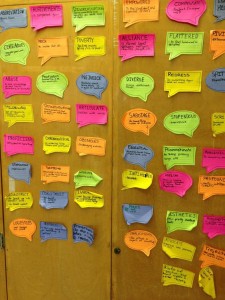Not only is teaching one of the most demanding professions, it is also one that garnishes the most rewards. Being a part of the narrative of our children, names us beneficiaries of their love, appreciation and the opportunity to positively impact their todays as well as their tomorrows.
I currently work in the school board that I was educated in. After 14 years as student, I’ve had the opportunity to return as a teacher, sometimes working alongside the teachers who have instructed me. I will never forget my first day on the job as I walked into the staff meeting only to see my grade 3 French teacher sitting among my new colleagues. She immediately recognized me and begged that I didn’t disclose that she had been my teacher for fear, perhaps, of her longevity being deemed something other than exceptional. I promised and never told, but more importantly, I was filled with a sense of accomplishment to know that not even 20 years before, I was a little girl, sitting keenly as she taught. I wanted everyone to know that I was a product of our system and the culmination of both peaks and troughs that have helped to shape who I am today.
What does this mean for me now? Simply that I view all my students as my potential colleagues. Not only do our students have the opportunity to join this rewarding profession as educators, but they very well can be the painters, doctors, mechanics, and bankers of tomorrow. In fact, with the rise of technology and innovation at its peak, the contributions that our students can have on our world can be found way beyond our imagination. Therefore, more than curriculum expectations, we need to teach our students how to be kind. We need to teach them to be the kind of people that will nurture and sustain a world filled with love and respect and work to rid the world of the challenges that rob this kind of experience for those in the margins.
How might we accomplish this? Be the change! Model citizenship. Breathe love. Administer respect. Invite productive conflict. Salute courage. The is the hidden curriculum that is constantly at work in the walls of our schools and that is the curriculum of life. Teaching our students how to navigate and persevere in challenging times will nurture the fortitude they will need moving forward.
Not only is teaching one of the most rewarding professions, it is also one of the most demanding. Being a part of the narrative of our children, names us responsible for inviting the kind of experiences that impact how identity is nurtured as students develop a holistic sense of self. Wielding the power of our impact with wisdom and love will ensure that the influence we have on our the students will be positive.

